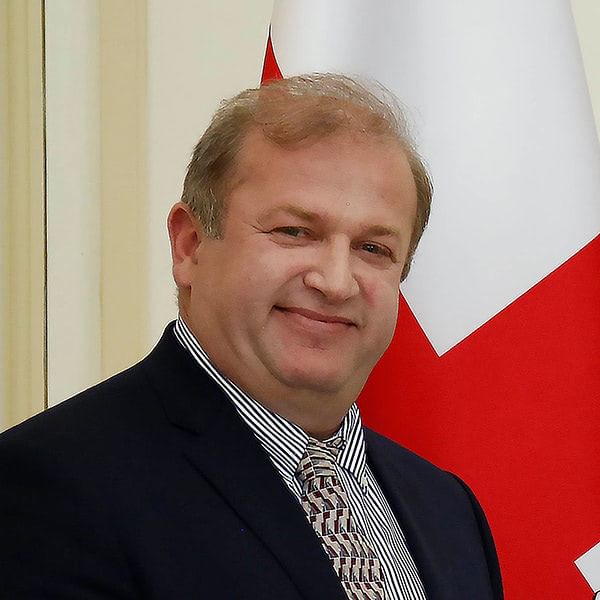- Undergraduate
Bachelor's Degrees
Bachelor of ArtsBachelor of EngineeringPartner School Dual-DegreeUndergraduate AdmissionsUndergraduate Experience
- Graduate
Doctoral Degrees
Doctor of PhilosophyPhD Innovation ProgramDoctor of Medicine-PhDGraduate AdmissionsGraduate Experience
- Research
- Entrepreneurship
- Community
- About
-

Fridon Shubitidze
Professor of Engineering
Overview of EMS research programs developed over two decades to solve real-world geophysical and medical problems.
Overview
Professor Fridon Shubitidze joined Dartmouth Engineering's faculty in 2007. He is a senior member of the Institute of Electrical and Electronics Engineers (IEEE) and earned his MS in radiophysics and his PhD in physical and mathematical sciences from Tbilisi State University in Georgia. He is a senior engineer/physicist at White River Technology, Inc.
Shubitidze received the DoD's Strategic Environmental Research and Development Program (SERDP) 2011 Munitions Response Project-of-the-Year award for the development of advanced EMI inversion models and UXO classification strategies. A native of the Republic of Georgia, he was awarded the Medal of Honor by the country's President in 2019 for "his personal contribution in the development of science and in the creation of modern technologies."
Research Interests
Numerical methods in computational electromagnetics; electromagnetic sensing methodologies; detection and discrimination of sub-surface objects; linear and non-linear inverse-scattering; induced geo-electromagnetic fields; micro strip antennas; photonic band gaps; near field optics; DNA sequencing; electrostatic discharge; magnetic nano-particles hyperthermia for cancer treatment and imaging
Education
- MS, Radio Physics, Tbilisi State University (Sukhumi branch) 1994
- PhD, Physical and Mathematical Sciences, Tbilisi State University 1997
Awards
- Presidential scholarship for young scientists (Georgia, 1997-2000)
- State Foundation Scholarship (Greece, 1998-1999)
- NATO Advanced Study Institute, Young Scientists Award (Italy, 2006)
Research Projects
-
Magnetic nanoparticles
Magnetic nanoparticles
This project provides quantitative data analysis, physical modeling, and numerical methods support to the Dartmouth Center of Cancer Nanotechnology Excellence. The project employs physical modeling and numerical methods to understand the electromagnetic interactions that occur when magnetic nanoparticles are placed in an alternating magnetic field in biological environments, and investigates the impact that biological parameters (e.g., blood flow) have on the ability to increase tumor temperatures locally.
-
Computational electromagnetics
Computational electromagnetics
Computational electromagnetics research is developing advanced analytical and numerical methods—such as the method of auxiliary sources, the method of moments, and pseudo spectral FDTD methods—for investigating high voltage non-linear electrostatic discharge phenomena as well as electromagnetic energy propagation in complex (Chiral and Bi-anizotropic) media.
-
Unexploded ordnance (UXO) detection and discrimination
Unexploded ordnance (UXO) detection and discrimination
Unexploded ordnance (UXO) detection and discrimination approaches are being developed to solve the Department of Defense's (DoD) most pressing environmental problems: UXO cleanup and humanitarian de-mining. The program combines advanced forward and inverse EM sensing approaches with statistical signal processing methodologies to solve these complex and challenging problems. See also UXO Research Group.
-
Label free genome sequencing
Label free genome sequencing
Label free genome sequencing is an advancing technology to "read" the sequence in a single DNA molecule in a massively-parallel fashion. The technology combines concepts of single nucleotide addition (SNA) sequencing, near field optics, single molecule force spectroscopy, and microfluidics. This work is performed in collaboration with Professor Dmitri Vezonov at Lehigh University.
Selected Publications
- F. Shubitidze, K. O'Neill, B.E. Barrowes, I. Shamatava, J.P. Fernández, K. Sun and K.D. Paulsen, "Application of the normalized surface magnetic charge model to UXO discrimination in cases with overlapping signals," Journal of Applied Geophysics, September 2006.
- F. Shubitidze, K. O'Neill, I. Shamatava, K. Sun, and K. D. Paulsen, "Fast and accurate calculation of physically complete EMI response by a heterogeneous metallic object," IEEE Transactions on Geoscience and Remote Sensing, volume 43, issue 8, pages 1736-1750, August 2005.
- F. Shubitidze, K. O'Neill, K. Sun, I. Shamatava, and K.D. Paulsen, "A hybrid full MAS and combined MAS-TSA algorithm for broadband electromagnetic induction problem," Applied Computational Electromagnetic Society Journal, pages 112-126, March, 2004.
- F. Shubitidze, K O'Neill, K. Sun, and I. Shamatava, "Coupling between highly conducting and permeable metallic objects in the EMI frequency range," Applied Computational Electromagnetic Society Journal, pages 139-148, March, 2004.
- F. Shubitidze, K. O'Neill, K. Sun, K. D. Paulsen, "Investigation of broadband electromagnetic induction scattering by highly conductive, permeable, arbitrary shaped 3-D objects," IEEE Transactions on Geoscience and Remote Sensing, volume 42, issue 3, pages 540-556, March 2004.
Courses
- ENGS 64: Engineering Electromagnetics
Videos
Electromagnetic Sensing at Thayer
News
In the News
Materials Research Society
Flower-shaped magnetic nanoparticles may help destroy deep-seated cancer cells
Mar 15, 2015
Flower-shaped magnetic nanoparticles may help destroy deep-seated cancer cells
Mar 15, 2015




